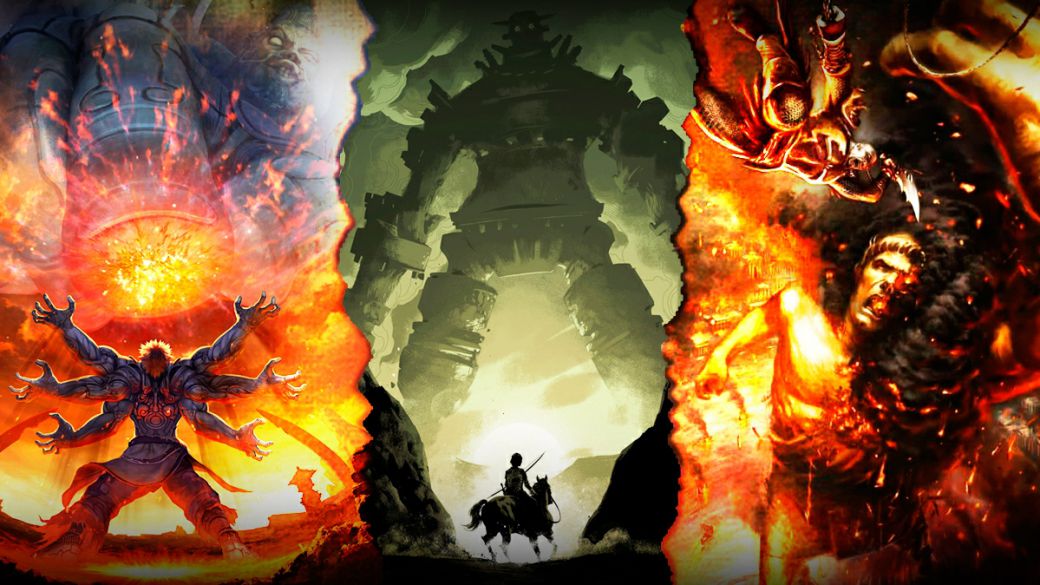
How are giants embodied in the narrative and on the battlefield? At Meristation we found out.
The bigger they are, the harder they fall. We are referring to the giants, a widely used figure in video games that exists between the border between the human and the inhuman, the accepted and the monstrous, the abject and the subject. Whether under the prism of the final boss or an ally character, the giants have traditionally occupied many meanings, having their particular role in the sector at hand. Our question is: Are they always the enemy to take down? How are the giants incarnated in the narrative and on the battlefield? In Meristation we will find out, and we review some of the most memorable giants to date.
Origin of the concept

The term giant is a historically ambiguous term, derived from the ancient Greek “gigas”, corresponding to the Giants of Greek mythology, who were known for their excessive strength and power. The rise of the giants is nothing new, let us not forget that although their origins are rather typical of mythology, the giants have been culturally creating their own stage as part of a particular and concrete framework in the world of fables, literature classic and modern science fiction. Today we will review the purpose of the giants in video games, and we will question how that excess is managed.
“The giant is what man abjects and desires, he is the most complete self that human man can never measure up to.”
There are as many visions about the figure of the giant, as there are cultures in the world. This distinction has significant implications for how we conceive of the giant, particularly in regards to its sociocultural perspective. From the giants that directly transpose medieval times, the jötnar giants typical of Norse mythology, the Greek titans and giants, to the Japanese oni and trolls. Thus, there is no single approach sufficient to define the concept of the giant in its entirety. The giants have usually been associated with danger, hostility and threat, being a clear objective that we must defeat. However, not everyone has been considered an enemy in video games. In addition to enemies, we have also seen benevolent giants and strong allies who have their place in tradition, the elemental forces of nature or of technology itself. In this report we will talk about the different figures of the giant, in addition to exploring his moral disposition within the game: either as an enemy, a neutral character and an ally.
NOTE: This report contains slight spoilers for Hellblade: Senua’s Sacrifice, Xenoblade Chronicles and Chronicles 2, Shadow of the Colossus, Mass Effect 2 and Bioshock Infinite
Giants: Mythological Approach
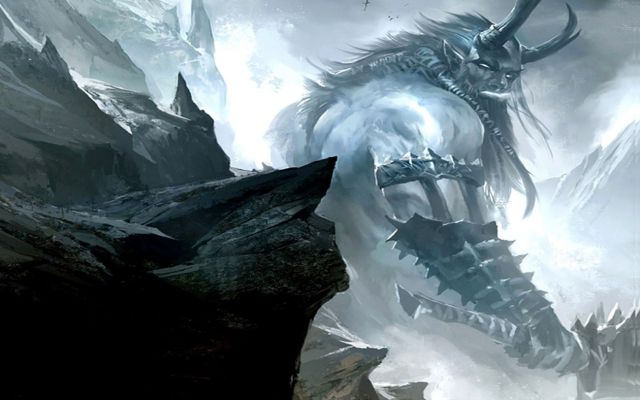
Video games are inspired by all kinds of influences, from the most modern to the classic. The giants, like their particular beginning in mythology, have also been more present than ever in video games, thus being able to revisit part of their original myths. Many companies have been close to mythology, but few have been as tied to it as the God of War franchise has been. Much of the work of the GoW developers is in debt to mythology, offering us an approximation with their own gods and specifically, with their concept of jötnar giants. The Jötnars are a type of entity in contrast to the gods and other large figures typical of Norse mythology in particular. Despite being called giants, not all Jötnar are large, as many members of the represented species vary between humans and animals.
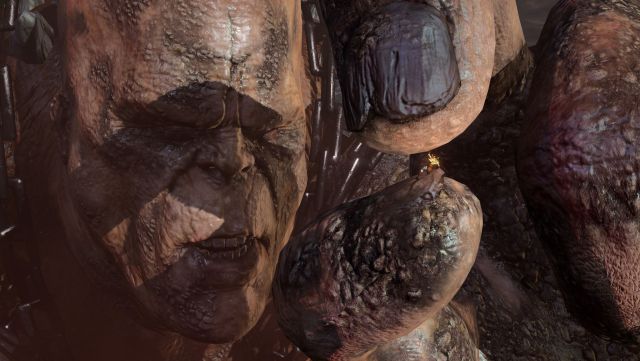
Cronos fighting Kratos in God of War 3
God of War has been a before and after in terms of the term of the giant. In God of War 3 (2010) we had the opportunity to face Cronos, one of the most iconic giants of the saga, in an incredibly epic battle on a scale like no other. The character simply dwarfs our warrior Kratos even more, holding him between thumb and forefinger. An enemy that is so great that it is almost a whole level in itself, and one that we manage to defeat with a little luck.

Hela, Hellblade: Senua’s Sacrifice from Ninja Theory
In God of War we have seen many mythological enemies such as Cronos (God of War 3), Thamur the ice giant from (God of War 4), as well as in titles such as Assassin’s Creed Valhalla, Bayonetta (with the boss Iustitia or Jubileus), or in Hellblade: Senua’s Sacrifice. The latter presents a more personal and introspective look at the monsters of excess, focusing on the inner demons of our own character, Senua. Through this, as players we experience Senua’s personal journey as we deal with her inner demons represented both physically and psychologically. Unlike other titles, Hellblade poses to the player something else, since after a long fight against many giants during the course of the game, we are denied the confrontation against their final boss. This time, instead of defeating his boss Hela, we spare his life.
A new oriental perspective: the oni
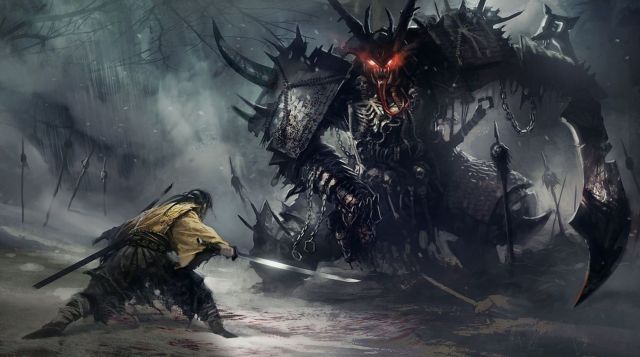
Giants are not appreciated or known in the same way in different parts of the world. The so-called oni, or the Japanese oni make direct allusion to the Japanese folklore associated with the giant demons. The oni are large in size, with anthropomorphic features and it is common to see them wielding a club, a sword or katana, being the personification of the erratic warrior or the ogre. We’ve probably seen countless of them, but few exceed the size of planet earth like Asura’s Wrath. A title where we wage our own fight with the gods themselves, until we face the final boss Wyzen, one of the most enormous bosses we have faced to date. Wyzen’s original form is big enough to crush a continent with just one finger, which of course, this is his weakness and the reason why our Asura character can beat him against all odds. Hiroshi Matsuyama, Game Producer: “In Asura’s Wrath we didn’t want to focus on the size of the things you fight, or how many of them there are. We wanted to go to the strangest, the ridiculous, the insignificant feeling of the player, the overwhelming. It is something that we have rarely seen ”.
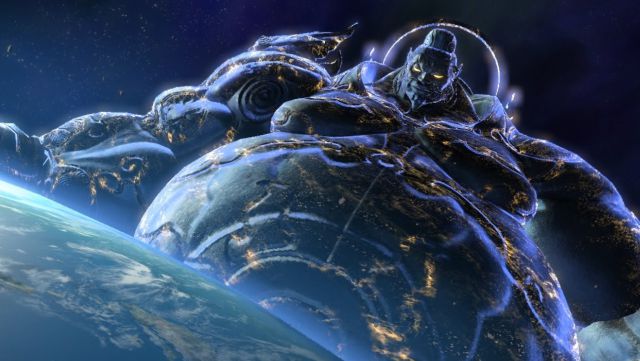
Wyzen, enemy in Asura’s Wrath
An example of this concept can also be seen in the Souls saga. Much of FromSoftware’s work is influenced by medieval European literature, art and architecture, and of course, it is also replete with its own enemies. In Dark Souls 2 we got a closer look at the figure and reviewed some of its own history. In it we explore past civilizations, trying to learn more about their history and their own destruction. One of those civilizations we visit is Drangleic, specifically the castle where King Vendrick and Nashandra ruled until the curse of the undead broke out. In this one, we are introduced to the giants primarily because of their conflict with King Vendrick and his kingdom. A figure that evolves from the first Dark Souls, going from an appearance much closer to normal humans, to a clearly differentiated one largely lacking facial features. Finally, in Dark Souls 2 we travel to the memories of several giants, in addition to being participants in the war between sides until finally defeating the King of the Giants. In general in the souls universe the giants play an important role in their own world, since there are few bosses who do not try to belittle us as a player. These enemies are not only bigger, but they are also designed to be confronted (and generally defeated). Bosses such as “the last Giant” in Dark Souls 2, “Yhorm the Giant” in Dark Souls 3, or the “Tower Boss” in Demon’s Souls, appear as fallen giants with potentially greater battlefield abilities than of any other rival of this size.
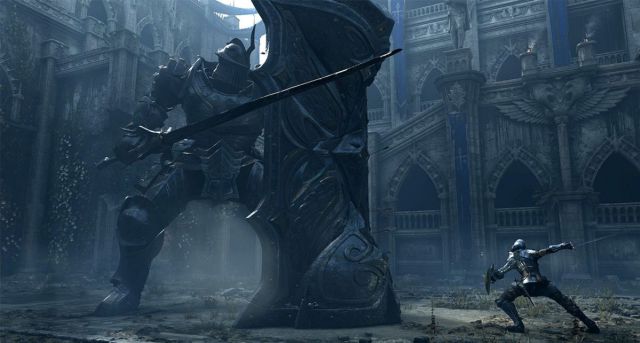
Tower boss in Demon’s Souls
Capcom is known par excellence for the success of the Devil May Cry, Street Fighter and Resident Evil franchises. However, little has been said about a saga: the Onimusha series. The title is an action-packed hack-n-slash set in feudal Japan where a battle is fought between samurai against demons. Onimusha: Dawn of dreams (PS2) is the personification of the giant oni, where we will face giant fighters with katana in hand. Our protagonist Seki, known as black oni, must prevent the seeds of the demonic Genma trees from spreading and infecting all of Japan with the creation of a dark army. Turned into a young demon hunter, we will face one of the largest giant samurai to date to establish peace and prevent humanity’s own destruction.
Titans, trolls and giants
Conventional approach
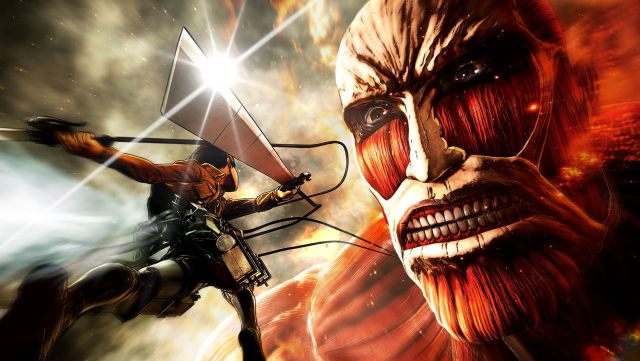
Attack on Titan
In addition to the mythological and oriental vision, we also find the conventional version of the titans or trolls. In fact we could name infinite categories, although in this case we will be based on the concept that we all know. Precisely Attack on titan, or also known as Shingeki no Kyojin, is the reference series as far as titans are concerned. We can say that when they first appeared in the series, we expected no less. After the humans retreated behind massive walls, a colossal-sized titan smashed through the defenses, unleashing an onslaught of giants and deaths wherever they passed. The game managed to faithfully reflect the anime, and allowed us to enter into aerial battles using the three-dimensional maneuvering team or also known in the series as EDM3D. A comprehensive view of the Titans depicting obvious differences between them: The Rudimentary vs. the advanced ones. Machiyama (Attack on Titan writer): “My first inspiration was the Muv-Luv Alternative video game, in which aliens invade and humanity is on the brink of annihilation. That was scary and I thought of a similar idea that could cause more panic like the Titans.
In Final Fantasy XV, most of the game is dedicated to exploring an “open world” full of missions with their respective usual RPG elements, but every now and then it also takes us into a scene full of particularly large enemies. In this case we refer to the combat against the Titan Archaea in Cauthess Disk. A tough enemy to crack that to defeat him we must constantly dodge and stop his attacks until he counterattacks and hunts him down.
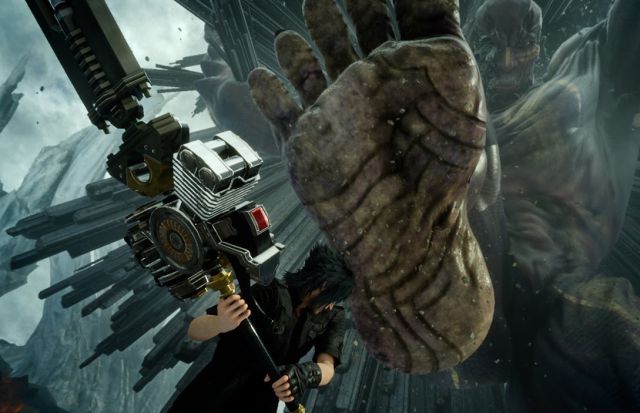
Noctis Vs. the Titan Archaea in Final Fantasy XV
When we think of The Lord of The Rings it is impossible not to think of trolls and other fantasy characters. In this case, as expected, we also saw these giants in their second installment Las Dos Torres (PS2). As in the film adaptation of The Fellowship of the Ring, we meet a cave troll who acts as the boss of the Tomb of Balin level. The title incorporated a new troll race known as Forest Trolls or Elemental Trolls, which appear in Fangorn Forest, as well as appearing in The Hobbit (2003), The Lord of the Rings: The Battle of the North (2011) and Shadow. of Mordor (2014), among others. Undoubtedly a very stereotypical image about trolls, and that at the same time, is related to its own origins in the medieval era, mixing with it the fantasy of Tolkien and other classic fables.
When technology (giant) subdues the human
One machine to rule them all

Horizon zero dawn
Giants have proven to be an important element through which we try to understand our relationship with technology, and particularly when technology comes to life or is transformed. With this, there are many doubts that assail us about the limits between human and technology. When is a machine human enough to be considered human? In a society such as Horizon Zero Dawn poses, we face a post-apocalyptic era in a world populated by robots. The adventure unfolds in two interconnected narratives, on the one hand the journey of our protagonist Aloy, and the story of how the previous civilization sank, giving way to the robots that dominate the planet. In Horizon they pose us a battle led by machines, being in command of humanity itself.
If we look back, we will remember that one of the great threats of the Mass Effect 2 title is its enemies, the reapers. In length, they measure from hundreds of meters to more than three kilometers, dwarfing the towns and cities they attack with every step they take. One of our first encounters with the figure of the technological giant we find it with the character of Human Reaper. After discovering the purpose of the abductions that occurred throughout the galaxy, we realize that they occur with the intention of extracting human DNA to be used in the construction of a giant Reaper human who, although still incomplete, awakens as the final boss. of the game. In addition to its enormous size, the Human Reaper is personified as one of the characters that crosses the border between organic and synthetic, through, of course, again thanks to technology.

The human reaper in Mass Effect 2
Excerpt from Mass Effect 2 on the Human Reaper: “-Shepard: They are building it to look like a human. Why? -EDI: It seems that the shape of a reaper is based on the species used to create it, the reapers are smart buildings, a hybrid of organic and inorganic material “.
The Fallout series has treated the use of machines better than ever, in a post-apocalyptic and uncertain world. A demolished setting resulting from the Great War of 2077. The world of Fallout exists in an alternate timeline that takes sides after World War II to Great War in 2077, a representation of American culture from the 1940s- 1950, with a more than advanced technology. In this sense, we find many machines, both enemy and allied. Liberty Prime is one of the largest robots in the game, designed as the ultimate super-weapon alongside Power Armor. It is the ultimate military power, but difficult to handle and unsustainable. Its main purpose is to assist American troops in liberating the Chinese invaders, until a few centuries later, Liberty Prime was put into operation by the Brotherhood of Steel, thereby changing its main purpose for which it was created. Our character, Wanderer, fights his own battle in the Wasteland, with all the good and bad that such an apocalypse entails.
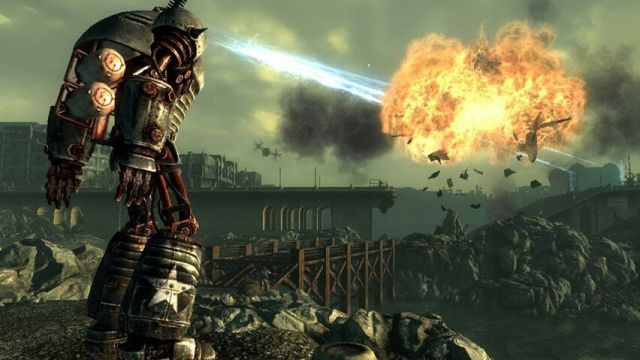
Liberty prime
In 2015, Square Enix announced that Yoko Taro would be making a new NieR title with PlatinumGames, the team behind Vanquish and Bayonetta. And indeed it was. NieR Automata (2017) takes place in the middle of a war between humans exiled on the moon and alien invaders, fought entirely by robots on both sides. The player-controlled YoRHa androids, blindfolded and indistinguishable from humans, are the last generation sent by humans to reclaim the earth. Its antagonists, the machines. However, the androids begin to question the very world they inhabit as they find themselves involved in difficult situations and fraught with moral dilemmas.
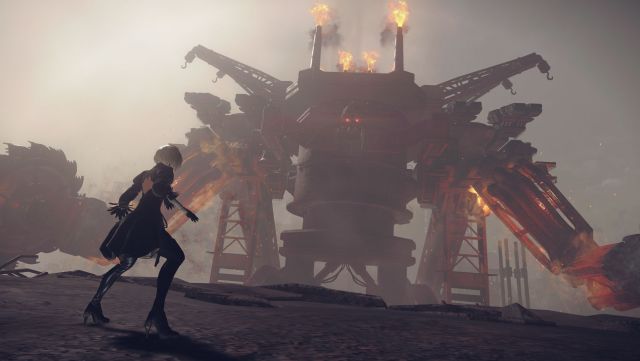
Nier Automata
Precisely, if we had to think of some memorable technological giant from the Metal Gear Solid saga, we would undoubtedly find it in Metal Gear Solid 4: Guns of the Patriots. Hideo Kojima and his team (Kojima Productions) worked hard to deliver a quality story that builds on everything that came in previous installments, while at the same time tying together a lot of new concepts. But above all else, Metal Gear Solid 4 did a great job of delivering moments of pure fanservice and epic boss fights. We refer to the presence of their gigantic machines, specifically the confrontation with RAY, the giant Metal Gear. RAY is a really giant enemy, very agile and with completely unpredictable movements when first seen. In the game, the fate of Solid Snake and the world is at stake as the undercover operative, a literal product of the Cold War, struggles to survive in a world where war has been commodified and computerized. A title that gave a sense of large-scale battle unlike any of its predecessors, thereby integrating a powerful background and technology-based enemies. In addition to RAY, we can’t help but mention Sahelanthropus, one of the most advanced and gigantic weapons to be found in Metal Gear Solid V: The Phantom Pain.

RAY in Metal Gear Solid 4
Putting Morale into Play: The Neutral Giant
Not all the giants have had bad intentions towards the player, as many others have taken sides in a neutral position, thereby posing their own moral dilemmas. Are they enemies, are they allies? Shadow of the Colossus (2005) was in fact one of the titles that managed to change the player’s perspective by complicating the moral perception in the game itself. Our character, Wander, begins his mission in the Forbidden Land in order to bring a girl named Monkey back to life. This mission makes him find and kill each colossus of said land, in exchange for being able to resurrect the girl. However, the representation of giants or colossi acquires a moral meaning, when as a player it encourages us to attack creatures that peacefully inhabit their habitat and that apparently do not represent a threat in the game. However, even if we do not want to attack them to enter history, we must do so. It will not be a quick death for the colossi or easy to carry out by the player, since each one corresponds to a unique pattern to be defeated, a specific strategy that will voluntarily involve us in their extermination, executing it against our will.
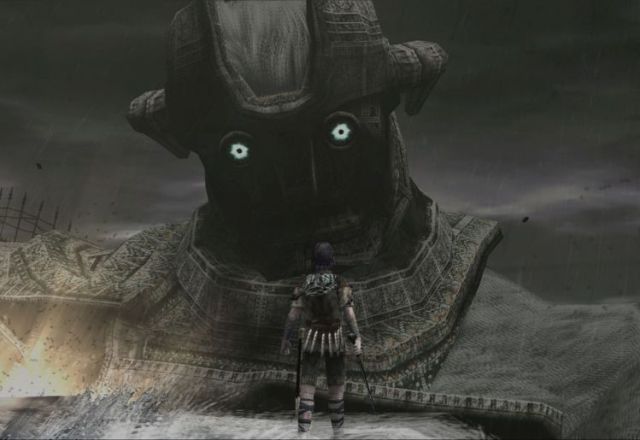
Shadow of the Colossus
Producer Kenji Kaido, producer of ICO and Shadow of the Colossus, for a Eurogamer interview: “The moral issue centered much more on Colossus than on ICO. When you’re on stage, maybe that’s where you get the isolation. But when you fight the colossus, there are similar mixed feelings. Maybe after defeating each colossus, that can make you feel confused and sad, but once you finish the whole game, you get a better picture of the feelings. “
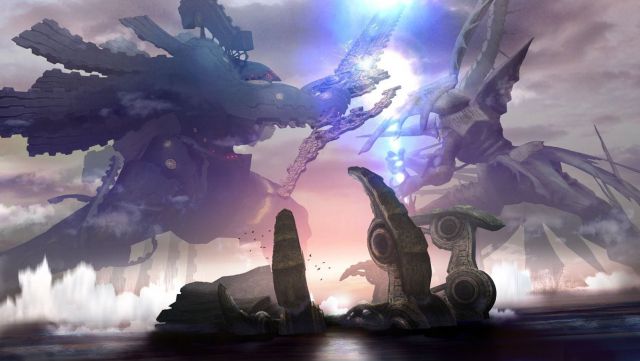
Xenoblade Chronicles
In addition to Shadow of the Colossus, we find more giants that do not directly interfere with the narrative as an enemy, as in the case of Kyoei Toshi (2017), Black and White (2001) or Xenoblade Chronicles (2010). In Xenoblade Chronicles, we find a conflict between two Titans, Bionis and Mechonis. One organic, Bionis, and the other mechanical, Mechonis, the two fought until only their inert bodies remained. Their own battle was due to misunderstandings between their civilizations and the lack of resources to keep all their populations alive. From here begins the creation of the world for the inhabitants of Xenoblade Chronicles. In this we will go through the conflict, we will advance through the bodies of the Titans, we will know their respective civilizations, until we reveal that the Titans were not dead, only in a vegetative state.
From the villain, to the hero and ally: Speak friend and enter

The Last Guardian
We can say that there are few titles that have enhanced the figure of the giant as an ally or hero. Titles like The Last Guardian, Giants: Citizen Kabuto, Extinction, Doshin the Giant, Folklore, God of War (Atlas), or Majin and the Forsaken Kingdom, have managed to go a step further to enhance their obvious characteristics from the point of view of allies. On this occasion, the titles that we will comment on are based on the fact that these large beasts share more than just being a simple ally, since in this case they establish a very close bond with our protagonists. Precisely, in 2016, the Shadow of the Colossus studio surprised us with the title The Last Guardian. In this we play a child who wakes up next to a huge creature chained in an underground lair. The name of the creature is Trico, a winged and feathered being sum of different animals (feline, rodent, bird, primate) that is seriously injured. In the game little by little we will gain Trico’s trust, later being an essential ally to be able to survive in the location of the Nest, in addition to creating a close emotional bond with our young protagonist. Excerpt from Fumito Ueda for The Guardian newspaper: “Once we finished with Shadow of the Colossus, there was a moment when I reflected on what we really wanted to communicate and represent in that game, for me it was the main relationship between Wander and the girl, but after the release, I read a lot of comments from players who were moved by the game, and they said that the relationship between Wander and the horse was the most important and attractive thing – we had a feeling that this was what the majority felt from the people. However, through the production of Shadow of the Colossus, I began to have doubts about just feeling good defeating monsters and having a sense of accomplishment. I thought it was okay, if that’s the case, there are a lot of mechanics from that relationship that we could improve and expand on. That’s where The Last Guardian came from. “
In the God of War saga we also saw how these enemies were on the friendly side, in this case with Kratos and Atlas in their second installment. The character of Atlas, one of the Titan from God of War: Chains of Olympus, is found again in God of War 2. Defeated and contained, Atlas was forced to carry the world on his shoulders, as he would remain forever in the world. top of the Pillar of the World. Atlas initially appears as a secondary enemy in God of War (1), and in his second installment we will see him on the friendly side, as an ally of Kratos.
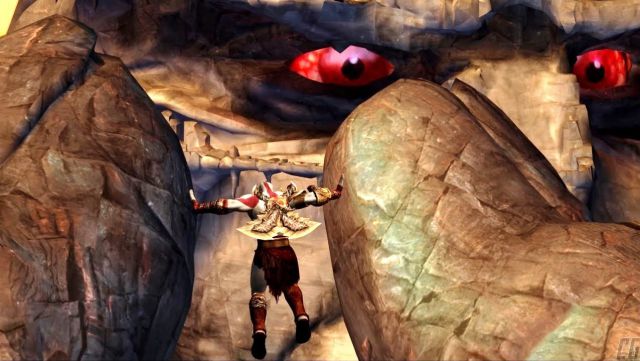
Atlas, from enemy to ally of Kratos in God of War 2
Under a concept similar to ICO and Enslaved, we find Majin and the Forsaken Kingdom (2010). In this, the fate of the world is in the hands of a giant beast named Majin. The story takes place in a once prosperous kingdom that is now overtaken by darkness and chaos. To change the kingdom of destruction, our protagonist Tepeu, a young thief, sets out to find and free the giant Teolt. The title is built around this naive guardian along with that of its protagonist. Their teamwork will be essential both to resurface humanity, and to establish an approximation of the elemental forces and new links between our characters.
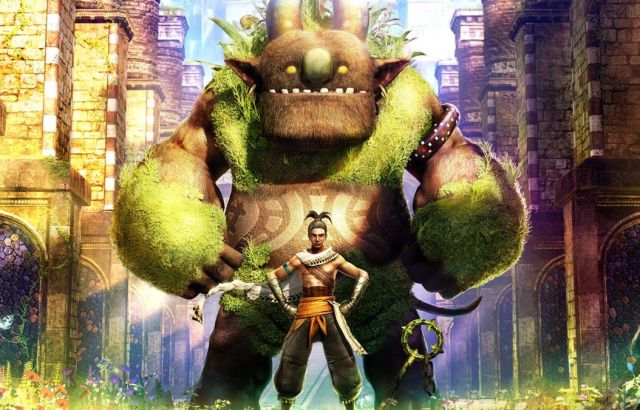
Majin and the Forsaken Kingdom
Almost twenty years after the Xenogears saga (1998), specifically in 2017, Xenoblade Chronicles 2 (Nintendo Switch) was published. This takes place within the world of Alrest, a realm formed by a huge sea of clouds full of Titanic beasts on which humanity lives. Titans that are present in the game in all kinds of ways. Specifically, we refer to the character of Azurda, a titan with the appearance of a small flying dragon, which despite its diminutive appearance is a century-old titan and was larger than a mythological dragon before dying. Once dead, he transformed into a small species accompanying our protagonist Rex throughout the game. In this way, Azurda travels as Rex’s companion, generally within his helmet, being one of his greatest allies, and responsible in part for his journey.
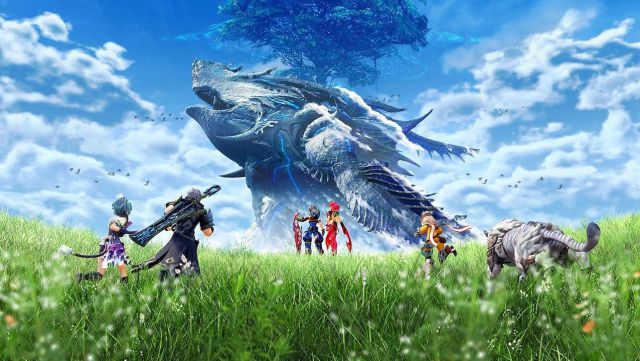
Xenoblade Chronicles 2
In Bioshock Infinite (2013) we leave the city of Rapture behind and enter Columbia, a city in the sky. On this journey, our protagonist Booker frees Elizabeth, a young woman who has the ability to create temporary tears, and for that reason, since she was a child she was held captive in a tower. Despite being locked up all the time, she has the company of Songbird, a giant bird created to keep her under surveillance and prevent her from escaping. Songbird was his only companion as he was a caretaker, as well as being a great ally in the game. In the title we will see a very close bond between them, being something more than a simple ally, practically converted into a brotherly relationship. In his DLC Burial at Sea, we can find many answers about the character of Songbird. We know that its creators, Suchong and Fink collaborated in the creation of Big Daddies and Songbird; since they shared similar technologies. Based on this idea, if Big Daddies are humans whose bodies have been grafted onto diving suits, wouldn’t this also be the case for Songbird? And most importantly, who would be in command of Songbird? We can’t think of anyone better than Booker DeWitt (from another universe) to act as Elizabeth’s guardian.
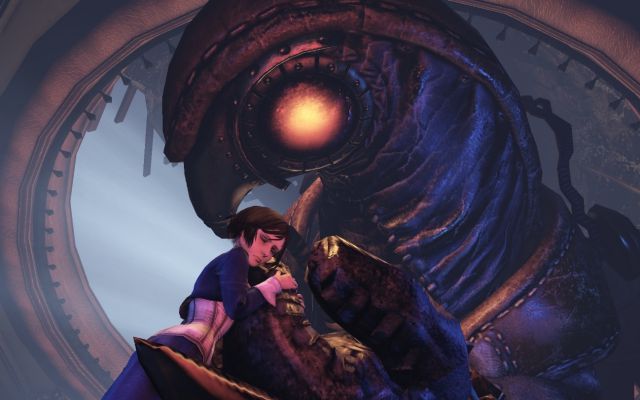
Bioshock Infinite
Regardless of their type and shape, the giants have been more than ever present in video games. There is no unanimity on its specific definition, since it is a figure that has acquired many meanings, changes, and influences. Whether from the classical, mythological, oriental, or technological prism, one thing is clear: they have had their own and particular prominence. So far we review the trajectory and evolution of this interesting figure, a figure without equal and that does not understand sizes.

